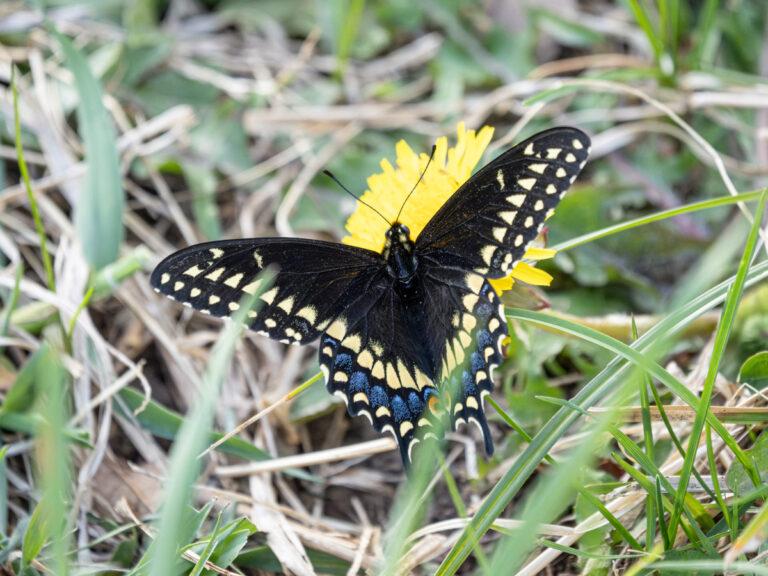
I set out for an early evening hike in late April in the hopes of finding birds to photograph. Birds often become more active again in the hours before sunset, after a period of low activity during the midday heat. Luck was not with me when it came to birds; I came home with only a single sighting and a few quick captures.
I was, however, pleasantly surprised to find a butterfly along the trail where it passed through a field! The grasses were only starting to recover from their winter hibernation, and the only flowers of note were a scattering of early dandelion blossoms, which were certainly the focus of this black swallowtail butterfly’s attention.
I followed her from blossom to blossom, angling for a good photo while she fed on the scant nectar, while trying to keep enough distance that I didn’t spook her. With cool days and cold nights, every calorie that wildlife is able to ingest is essential to their survival, which makes it all the more important not to inflict stress or drive them from a food source.
This is a good time to recognize the role of dandelions as a food source; many of us regard dandelions as a common weed and banish them from our yards and property. I know I’ve been guilty of that myself! In early spring, however, dandelions are often the only available source of nectar for pollinating insects, who are already struggling against harsh conditions. For them, finding a handful of dandelion blossoms is akin to finding an oasis in the desert, and could well determine their survival.
Personally, I’m trying to be more tolerant of dandelions in my yard. I’ll remove the spent blossoms before they turn to seed, but I try to resist digging them out until other flowers have started to blossom. I’ve invested considerable effort in attracting pollinators to my yard, so it seems counterproductive (and a bit unfair) to withhold my support when they need it the most.